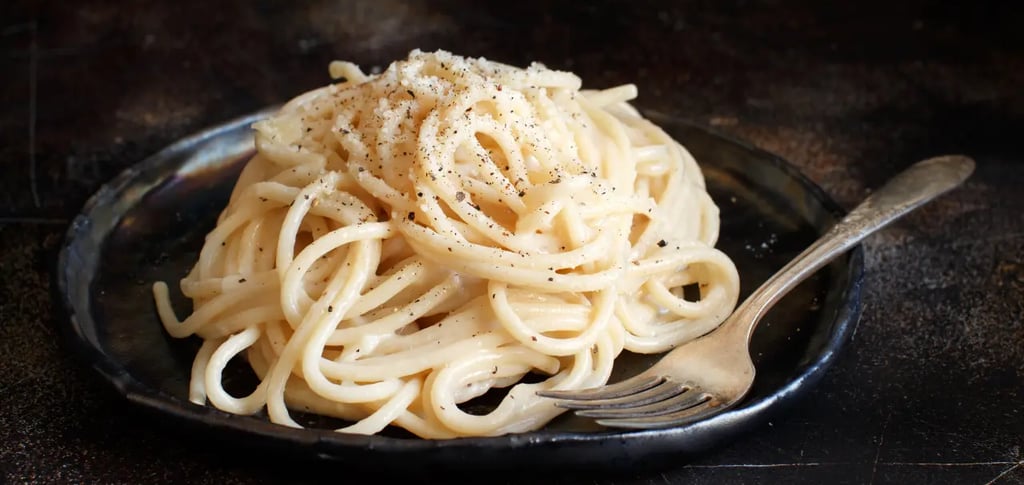Cacio e Pepe: Rome’s Creamy, Peppery Pasta Legend
Just pasta, pecorino, and black pepper — this Roman classic turns three simple ingredients into pure, silky comfort.
FOODLAZIO


No butter, no cream—just pasta, cheese, and pepper. Cacio e pepe is the Roman response to culinary minimalism, a recipe so straightforward there’s no place to hide, and so tasty there’s no need to dress it up. One spoonful of its smooth sauce shows why Romans have been making it this way for generations.
History and Origins:
Its name is short for “cheese and pepper,” and that’s exactly what it is. It has ancient origins in the Roman countryside with shepherds, who carried dried pasta, aged ewe’s cheese (pecorino romano), and black pepper—ingredients that kept well during long stays in the fields. With boiling water over a campfire and some finesse, they turned these into a nourishing, comforting meal to warm even the coldest evenings.
Ingredients and Preparation:
The magic of cacio e pepe is in the technique. Ground black pepper is toasted in a pan to release its aroma, and pasta—often tonnarelli or spaghetti—is added with a splash of its starchy cooking water. Off the heat, grated pecorino romano is whisked in to form a creamy emulsion clinging to each strand. The challenge lies in preventing the cheese from clumping, which is why timing and heat control are key.
Where to Try It:
In the Eternal City, Felice a Testaccio is famous for cacio e pepe, tossed tableside. Da Enzo al 29 in Trastevere offers a deeply peppery version loved by locals. For a modern take, Roscioli pairs superior pasta with artisanal pecorino for a fuller, more intense flavor.
Conclusion:
Cacio e pepe is Rome on a plate—bold, simple, and unforgettable. With just three ingredients, it proves that when you start with the finest, simplicity itself becomes a luxury.
